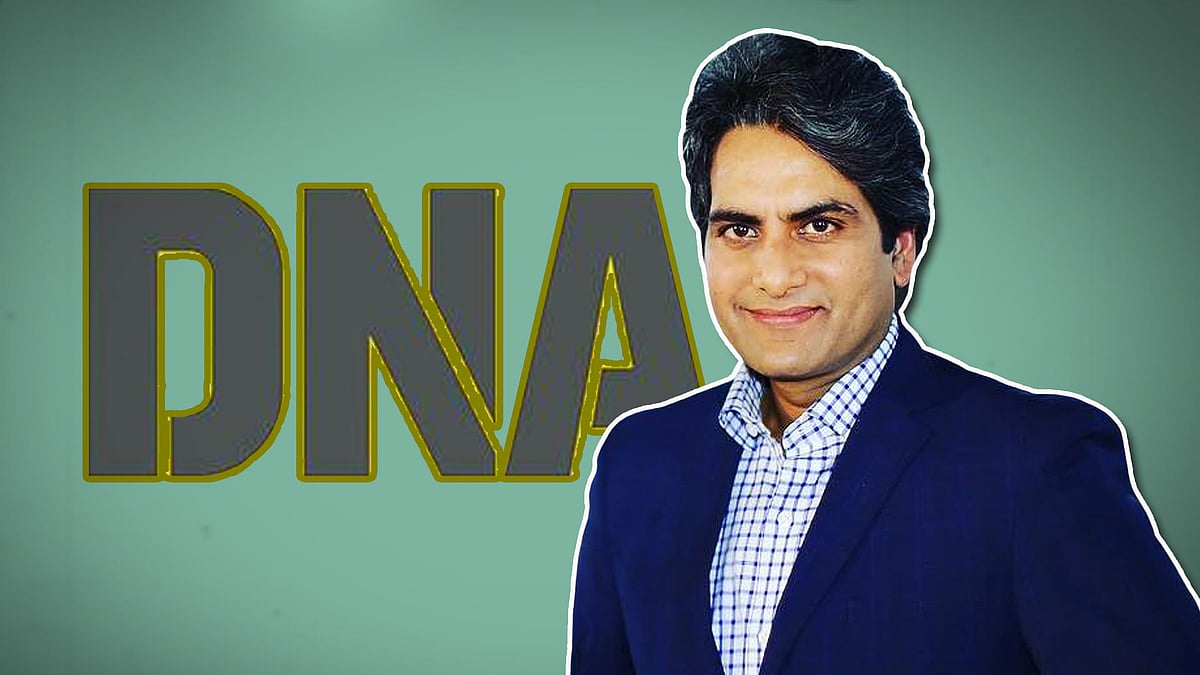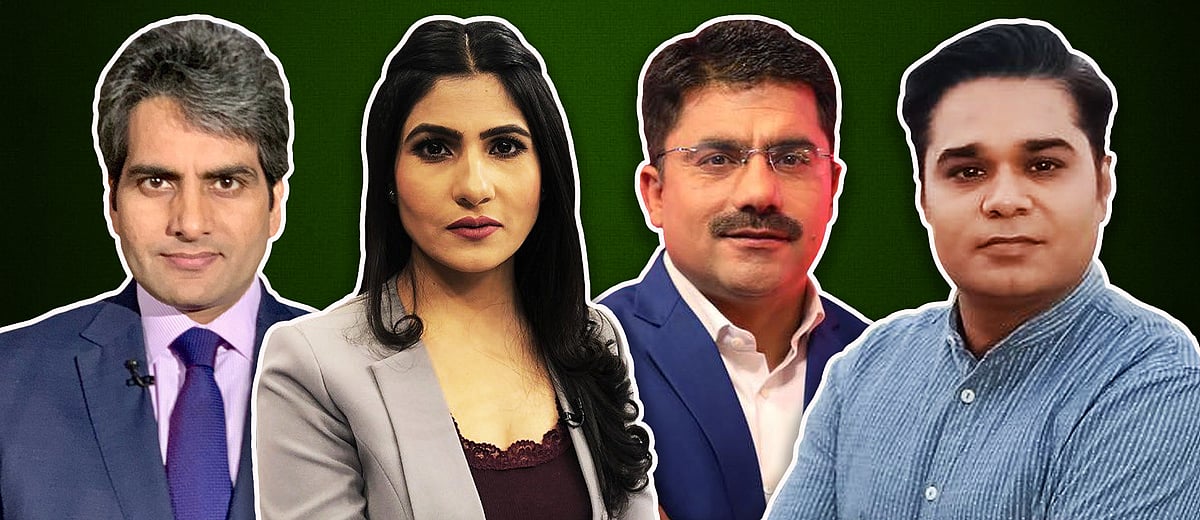Why is Arnab Goswami no longer shouting about attacks on journalists in Delhi?
TV anchors go ballistic when their reporters are heckled or boycotted by ordinary citizens. But they are silent on violent attacks on mediapersons during the Delhi riots.
Apart from pioneering the “squeeze 12 talking heads onto a screen for a shouting match” format of TV debates, Republic TV Commander-in-Chief Arnab Goswami has mastered the art of using press freedom to browbeat his nightly primetime targets. The format is simple: send your reporters to heckle and mock those darn “tukde tukde” people, evoke a reaction, and then cry “my press freedom attacked!”
We saw this with Shashi Tharoor, Jignesh Mevani, Mani Shankar Aiyar, Lalu Prasad Yadav, Tejashwi Yadav, and even unsuspecting Jawaharlal Nehru University students. Of late, we have seen it with the protesters against the citizenship law.
It was curious then (or maybe not) that Arnab stayed silent when one of his reporters, among many others, was attacked during the Delhi riots.
First, let’s examine Arnab’s performance art around press freedom. Not long ago, he had a meltdown, to put it as mildly as his channel’s graphics. He proclaimed, “This is not CAA, NRC or fee hike anymore. This is about your problem with India and our support for India. So take my challenge, come out. Debate with me. Don't try to push my reporters out. Accept their view is for India.”
As he conflated the nation’s interests with what Republic TV does, he sent out a message: if you have a problem with my channel, take it up with me and not with my reporters. Here’s the full video.
Since the anti-CAA protests broke out, a section of India’s TV news has faced heat on the ground, for varied reasons. But to put it succinctly, a section of TV anchors, whom Ravish Kumar of NDTV has dubbed “Godi Media”, has consistently spun narratives in favour of the government, making public villains out of anyone who resists – students, protesters, minorities. Such anchors regularly use their influence and reach to dehumanise and take away agency from the subjects they go after.
Attacks on reporters — regardless of whether their channels peddle hate and propaganda or not — are not justified. I have previously argued how reporters on the ground should not face the consequences of their anchors’ antics and why it is in fact counterproductive. Should they be boycotted though? Hell, yes. The misinformation and blatant lies they have used to manufacture public anger and sow seeds of bigotry is no laughing matter; it must be resisted. (Subtle plug: TV Newsance calls it out on a weekly basis.)
Back to Arnab. It’s interesting how he uses incidents of his reporters facing public ire to amp up the Republic TV brand.
To borrow from our home minister, aap chronology samajhiye. First, Republic TV incites hatred through misinformation and name-calling (anti-national, tukde tukde gang, Lutyens’ lobby) against anyone who dares speak out against the government. Then, when those it targets boycott the channel and don’t entertain its reporters, Arnab uses the incidents to position Republic TV as the nationalist channel that champions journalism and, for that reason, is the eyesore of all “anti-nationals”.
So, when communal violence was spreading across North East Delhi, and journalists were being attacked, intimidated and stopped from doing their work, Republic TV would have gone to town talking about those attacks, right?
No. Throughout last week as reporters shared harrowing details of how they were assaulted and threatened by the Delhi rioters, Arnab and his channel did not deign to talk about them once. Not a word. This when reporters from across outlets were attacked and harassed – NDTV, India Today, the Times of India, CNN News 18. Republic TV’s own reporter, in fact, found herself in a hostile situation.
And mind you, these weren’t random heckling incidents. These were strategic attacks on journalists to ensure the violence wasn’t covered. Pick any riot or war. Each brings up visuals that over time define and represent that particular episode of brutality. Remember that image of Qutubuddin Ansari pleading for help during the Gujarat carnage? Or those charred city visuals from the 1984 riots? Or the 9-year old running naked on a road after being burnt by napalm in Vietnam. These visuals etch the violence and its victim onto history and media forever. Last week, at least in the first few days when reporters were covering the riots in Delhi, anyone with a phone or a camera was looked at with suspicion and heckled (if they were lucky). Veena Nair, one of our reporters, had her phone snatched and formatted when she was in Maujpur. We know why.
So, what explains the silence of the likes of Arnab on this unprecedented attack on the press?
Stories in the jigsaw of agenda and spin
Let’s look at the hashtags Republic TV ran in the same week. #EndTheViolence, #IndiaVsMob, #SlanderPlotFlops, #NationFirst, #IndiaSaysNoMore, #ArrestTahirHussain, #ExposeWesternMedia, #JudgeTransferTruth, #WhoIsInstigated, #TukdeGangTrial, #MuslimQuotaSplit.
While ground reports may not still establish the timelines of the violence, one thing is clear: the complicity of state police. Even journalists and writers who often side with the government are pointing that out. Not Arnab. With #NationFirst, he asked, “Why abuse the forces as they restore calm?”
Other debates too essentially served the purpose of ensuring no questions were raised about the home ministry’s failure (The Delhi police reports to Amit Shah).
Everything that Arnab says and shows on TV is part of a larger jigsaw of agenda which, in the garb of putting the nation first, aids and parrots the government. To highlight attack on journalists, who have covered the state’s complicity, doesn’t fit in that jigsaw. How do you give space or mention reporters who are writing about the shocking police brutality when you are questioning the very people who are asking for police’s accountability?
Arnab wasn’t the only one who didn’t take up the attacks on journalists. Sudhir Chaudhary of Zee News, and Navika Kumar and Rahul Shivshankar of Times Now too did not deem the attacks important enough to run hashtags or spout primetime monologues about. If nothing, Times Now could have talked about the attack on a photographer with the Times of India, which belongs to the same media group. But, just like Republic TV, it doesn’t suit Times Now’s jigsaw of agenda. It’s appalling how identical the tones of Times Now and Republic TV debates are for any major news event. For all their ads and campaigns claiming market dominance, they are truly ek hi thaali ke chatte batte. They are cut from the same cloth.
When Times Now did take up the roughing up of their own reporter at BJP leader Kapil Mishra’s “peace march” on February 27, on India Upfront and Newshour, it was with the hashtag #DelhiRiotTruth. As the situation seemingly improved in North East Delhi, and the news cycle progressed, the debates on both channels were focussed on who to pin the blame on.
Sudhir as well as Deepak Chaurasia of News Nation who had denounced the peaceful resistance they had faced at Shaheen Bagh as the greatest threat to press freedom kept silent for the same reason: the attacks on journalists in Delhi didn’t fit their spin.
Contrast this with all the times they were not welcomed by the “tukde tukde gang”. Note the words: “emergency”, “two of the country’s biggest journalists stopped”, “absence of fear”.

Here, let Sudhir show you how.
Arnab’s spiel about Lutyens’ media and what he calls “lobby journalism” has more to do with how he wants Republic TV to be seen (the only channel with no vested interests that “anti-nationals” are after) and less with the number of hoots he gives to the journalism ecosystem.

For TV anchors, press freedom is just a tool for grandstanding, and to amp up their personal brand and their channels’. They will have you believe they are the torchbearers of free, fearless journalism, but scratch the surface and you will find it’s nothing but a marketing gimmick in a cluttered marketplace – and, of course, a ploy to push their agenda.
 सुधीर चौधरी की नादान पत्रकारिता का डीएनए
सुधीर चौधरी की नादान पत्रकारिता का डीएनए Tricks of trade: How Hindi TV news anchors are delegitimising citizenship law protests
Tricks of trade: How Hindi TV news anchors are delegitimising citizenship law protests